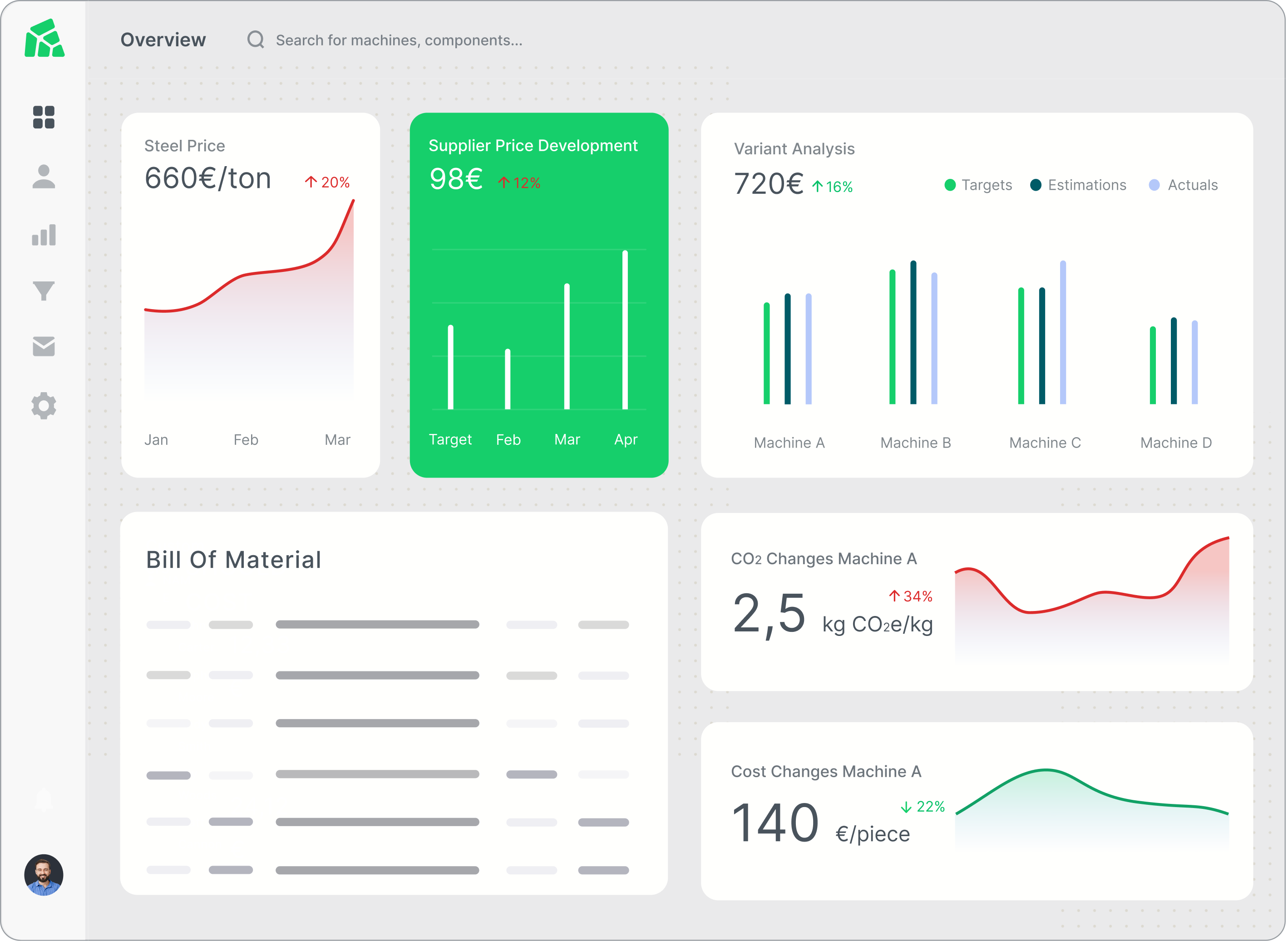News
June 26, 2025
What Is Product Lifecycle Costing – And Why It’s Critical for Cost Excellence
Discover what Product Lifecycle Costing (PLC) is, why it matters for cost excellence, and how to use it for smarter product development decisions.
Struggling with cost and value engineering in your SME? Learn about the common pitfalls and how to avoid them

Have you ever wondered why so many small and medium-sized enterprises (SMEs) struggle with cost & value engineering, despite its critical role in determining the success or failure of new hardware product launches? The reality is as simple as it is disheartening.
This blog will delve into the top four mistakes SMEs make in their cost and value engineering strategies. By identifying and understanding these pitfalls, your business can navigate through the complexities of product launches more effectively. Ready to dive in?
"Cost & value engineering expertise remains trapped within the high walls of consultancies, that are not affordable for continuous support. For SMEs, accessing this knowledge is often out of reach, leaving them in the dark about best practices that drive success."
SMEs often lack the in-house expertise needed to navigate the intricate details of cost and value engineering. These crucial insights typically reside within expensive consultancies, which are beyond the financial reach of smaller businesses. This knowledge gap prevents SMEs from optimizing their cost structures and maximizing value, putting them at a disadvantage compared to larger companies.
"Finding cost and value engineers is like searching for a needle in a haystack. SMEs often lack the resources needed to establish dedicated internal departments, further widening the gap between them and their larger competitors."
Recruiting skilled cost and value engineers is a significant challenge for SMEs. The talent pool is limited, and many professionals in this field are already employed by large corporations. Without the right personnel, SMEs struggle to implement effective cost and value engineering strategies, hindering their ability to compete and innovate.
"How often have you heard experienced employees nearing retirement say, "We've always done it this way, and we've always been successful? Unfortunately, clinging to outdated methods in today’s volatile, high-demand market can lead to failure."
Change can be daunting, especially for seasoned employees who have been successful with traditional methods. However, the business landscape is constantly evolving, and what worked in the past may not be effective today. SMEs that resist change risk falling behind their competitors. Without proper knowledge management, when experienced employees retire without passing on their knowledge, SMEs lose valuable insights that are critical for maintaining and improving cost and value engineering processes.
"Existing software solutions are tailored for large corporations, requiring specialized skills to navigate rigid and expensive systems from the 1990s. This leaves many SMEs with no viable alternatives other than inefficient manual processes (Excel), hindering their competitiveness in the market."
Many SMEs rely on outdated or unsuitable software to manage their cost and value engineering efforts. These tools are often complex, expensive, and designed for larger organizations. As a result, SMEs resort to using manual processes, such as Excel spreadsheets, which are prone to errors and inefficiencies. This lack of proper tools makes it difficult for SMEs to streamline their operations, reduce costs, and enhance value.

After speaking with 50+ experts, valuemize made it to its mission to break down these barriers. We’re developing an easy-to-use, automated, and data-driven software solution designed specifically for SMEs.
valuemizes' goal is to democratize access to cost & value engineering, ensuring every manufacturing company has the tools they need to thrive in a dynamic market.
The solution aims to bridge the knowledge gap by providing affordable, continuous support tailored to the needs of SMEs. By leveraging automation and data-driven insights, we empower small businesses to optimize their cost structures and enhance value without the need for expensive consultants 24/7.
Cost and value engineering is a critical component of any successful product launch strategy. By avoiding the common mistakes outlined above, SMEs can enhance their competitiveness, drive innovation, and achieve sustainable growth.
Investing in the right tools and resources, embracing change, and fostering a culture of continuous improvement are essential steps for SMEs looking to overcome these challenges. At valuemize, we are committed to supporting SMEs in their journey towards cost and value optimization, ensuring they have the necessary tools and knowledge to succeed in today's fast-paced market.
____________________________________________________________________________________________________________________
FAQs
Q: What is cost and value engineering?
A: Cost and value engineering is a systematic approach to improving the value of a product by analyzing its functions and reducing its cost without compromising quality.
Q: Why is cost and value engineering important for SMEs?
A: It helps SMEs optimize their cost structures, improve product value, and compete effectively in the market.
Q: How can SMEs overcome the knowledge barrier in cost and value engineering?
A: By leveraging affordable, automated, and data-driven software solutions designed specifically for their needs, SMEs can access the necessary knowledge and tools without the high costs of consultancies.
Q: What are some common inefficient processes in SMEs related to cost and value engineering?
A: Many SMEs rely on outdated software or manual processes like Excel spreadsheets, which are prone to errors and inefficiencies, hindering their ability to streamline operations and reduce costs.
